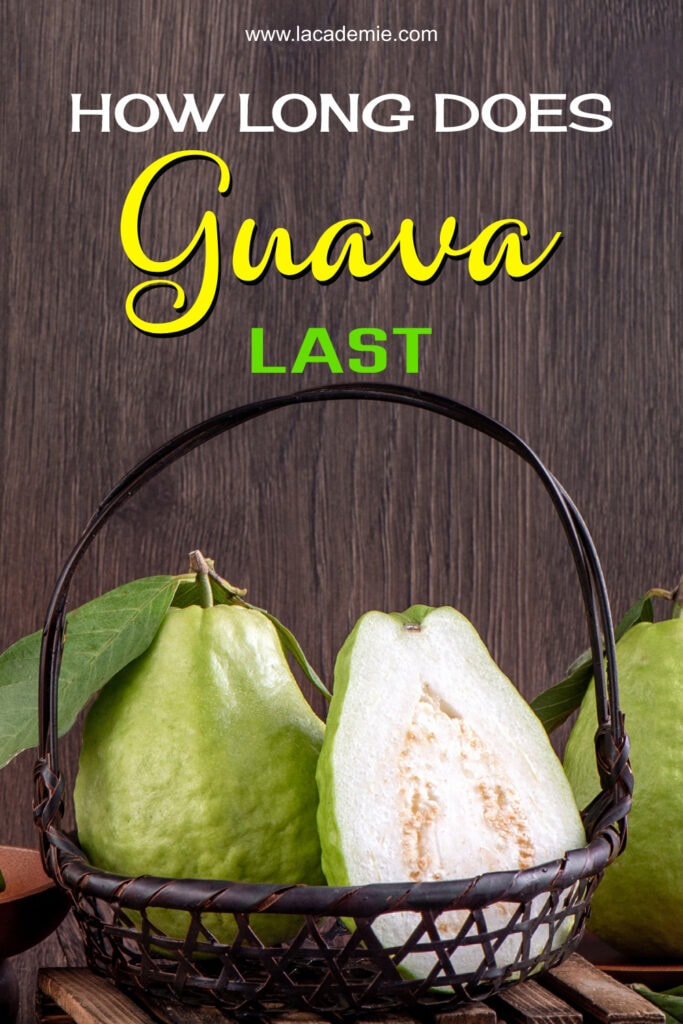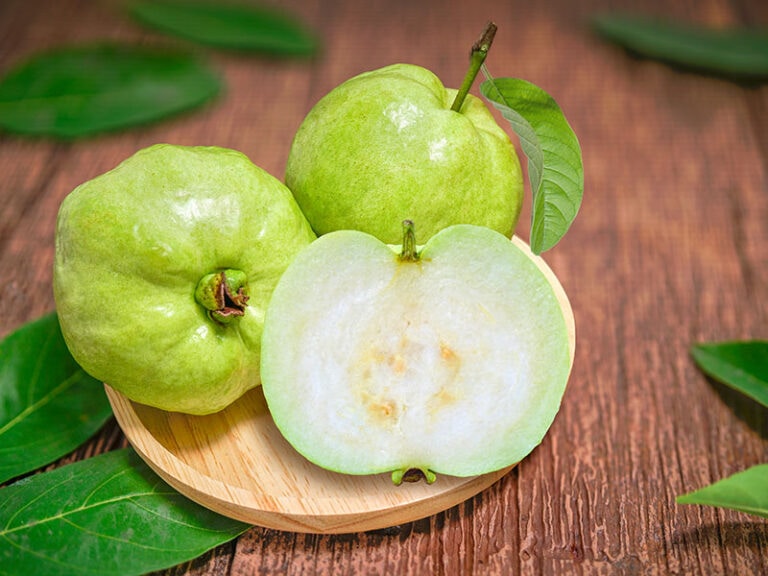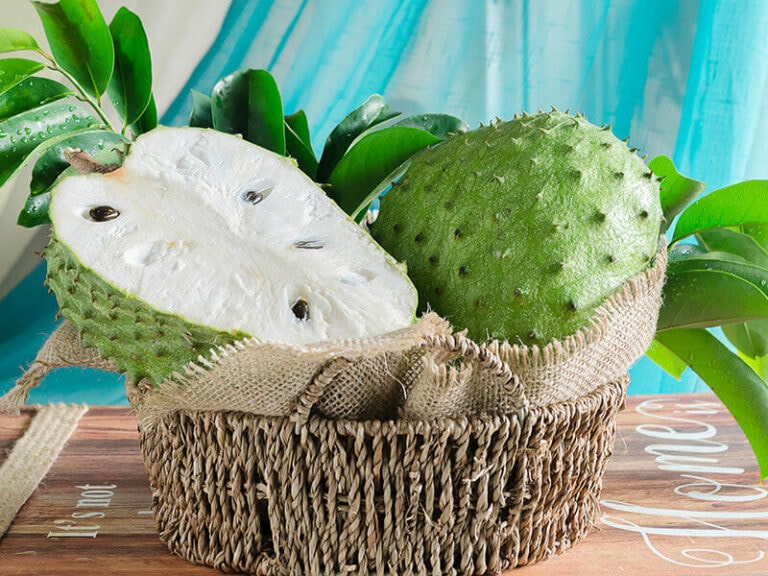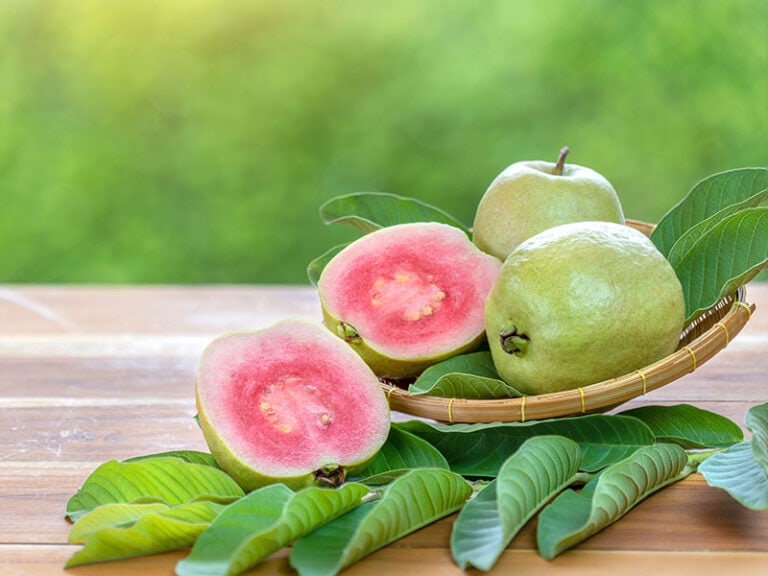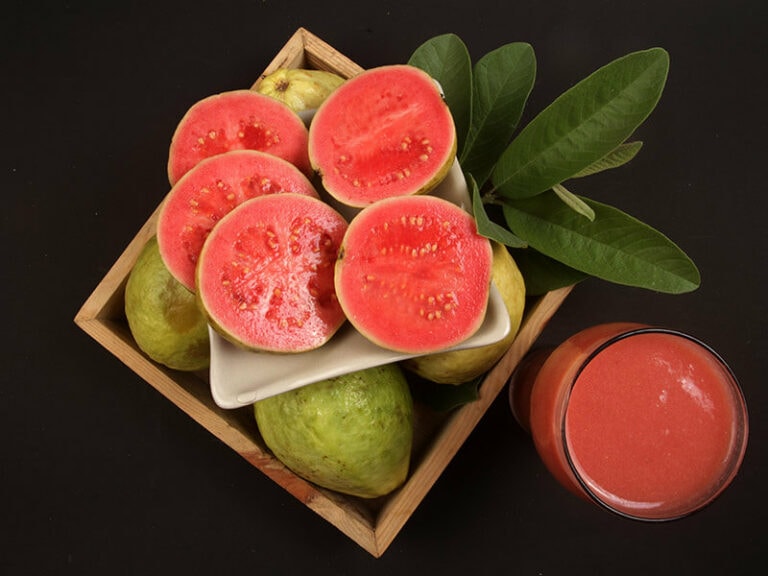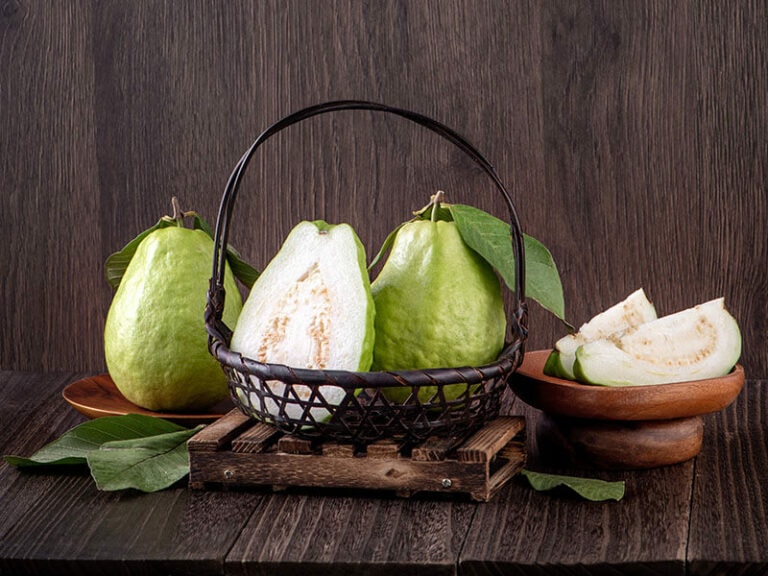“How long does guava last?” is a question that is frequently asked by many people, especially guava’s new fans.
Since guava is a fruit that may not usually appear on your local store’s shelf, little has been known about it. What is guava, how long can it stay in the fridge, and how do you store guava properly are still very much concerned.
If you’re having the same questions, continue reading because this article is about to explain all that you’re curious about.
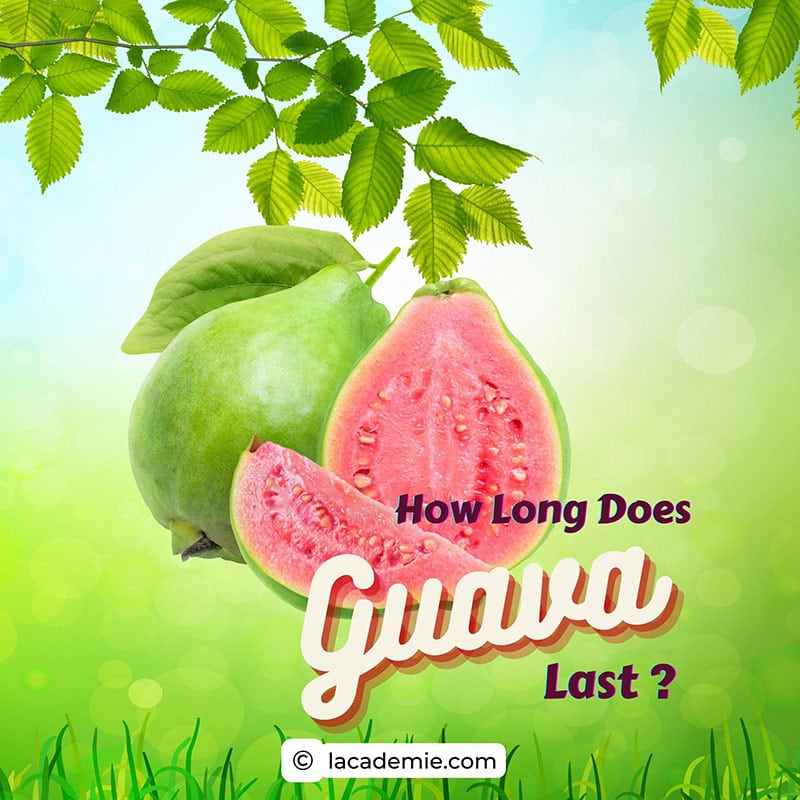
What Is Guava?
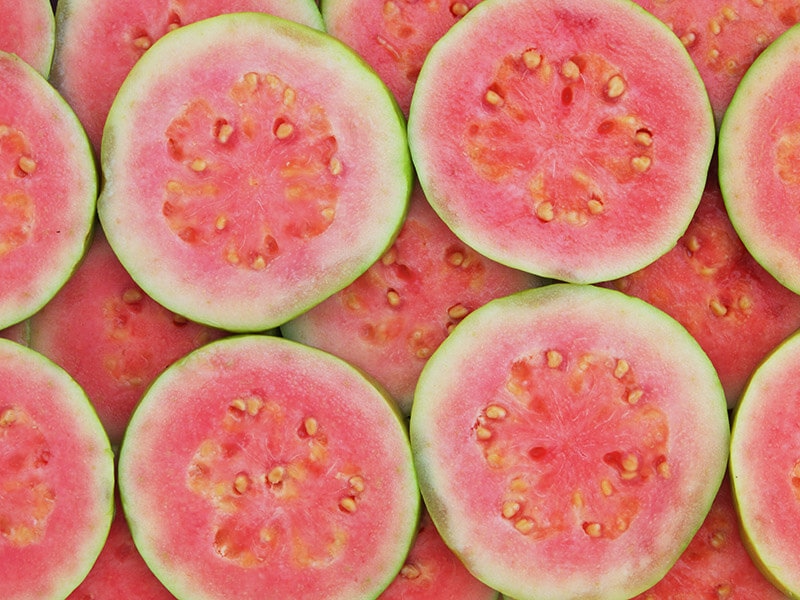
Cultivated in many different tropical and subtropical regions around the world, guava is a tropical fruit native to Mexico, Central America, the Caribbean, and northern South America. (1)
The fruit shapes in various sizes and colors, depending on the species and the cultivating region. Guava’s main seasons are from August to October and February to March.
Many love the deliciously sweet taste of guava and its numerous nutrition values. Though guava is not quite common around supermarkets or grocery stores in North America, it is popular in Hawaii and Florida.
“Are guava, guayaba, and guanabana different from one another?” is a question for a lot of people. Basically, guanabana is an entirely different fruit species, while the first two are the same for the most part.
Don’t know how to eat Mexican guava? Here is your instruction!
How Long Does Guava Last?
Fruits are fast when it comes to expiration. Guava is no exception as it gets rotten shortly after it gets ripe. This is attributed to a high concentration of sugar located in ripe guava. So, here is a table to summarize the guava’s shelf life.
At a normal room temperature, ripe guava can last for a couple of days uncut. Unripe guava can last for up to a week outside of the fridge.
Kept in the refrigerator, ripe guava can last for approximately 4-5 days, while unripe guava can stay fresh for a couple of weeks.
The longest time guava can tolerate is up to 12 months if stored properly in the freezer. For more details, frozen ripe guava can last for 8 months, more or less. After 8 months, its quality may not be as good but can still be consumed.
As storage time varies under different conditions, pick yourself the best storage option to maximize your usage of guava. Read on for some simple storage hacks!
Guides To Extend Guava’s Storage Time
For a fruit lover, keeping your fruit fresh as long as possible is the key to happiness. If that’s what you’re having trouble with, I’ve got your back with some useful tips on lengthening your guava’s stay in the kitchen.
Guava’s Storage Temperature
The ideal environment to store guava is from 7 to 10 degrees Celsius and 85 to 95% relative humidity. This applies to short-term storage, which means that guava kept under these conditions can last for 3-4 days.
The optimum temperature for guava to remain at its highest quality is 6 degrees Celsius and 90-95% relative humidity. (2)
Store Guava At Normal Room Temperature
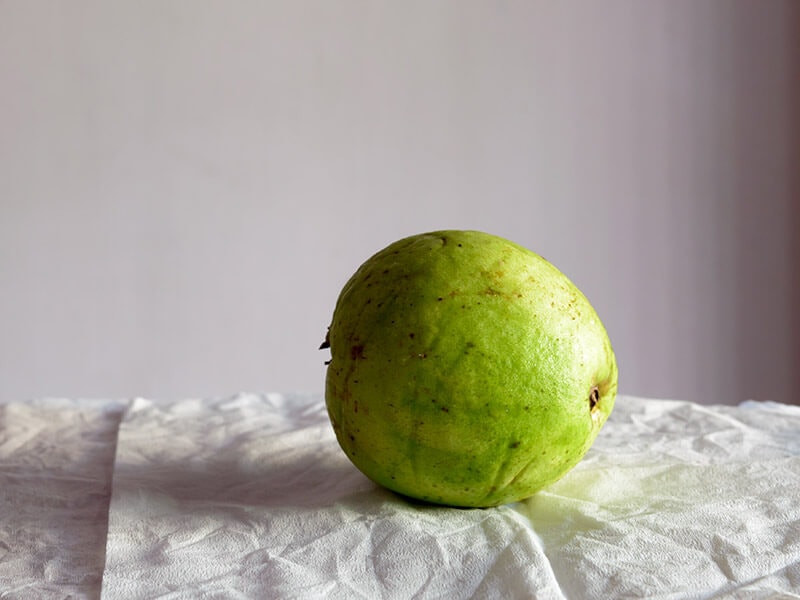
Keep your guavas at room temperature for instant consumption, as guavas go bad shortly after they turn ripe. As for unripe guavas, you can leave them on your kitchen counter for a few days, and they will ripen gradually.
Remember that heat sources like direct sunlight may ripen your guavas before the due time, meaning that guavas will be rotten before you can even notice.
Tips For Storing Guava in The Fridge
Given that it is only a couple of days before ripe guava goes bad at room temperature, some refrigerating techniques may help tackle the problem.
Step 1: Prepare Your Tools
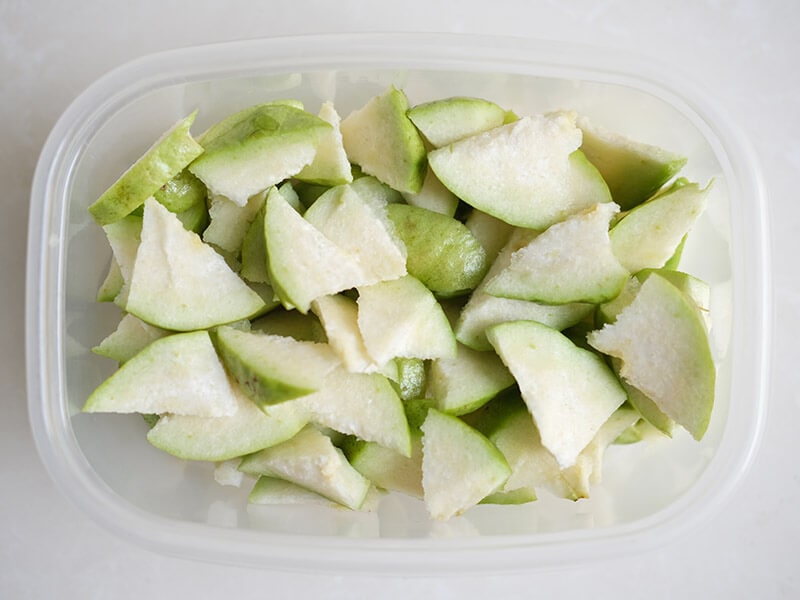
Before moving your guavas into the fridge, make sure they ripen first. You only need to place them on the counter for a couple of days. Afterward, feel free to store guavas in the fridge, whether whole, peeled, or cut.
With the last two options, you can store them in a container or a plastic bag. But a whole guava can only stay in a plastic bag since it’s too big for a container. So, be careful when choosing your tools.
If you choose plastic bags, make sure they are clean and dry, as humidity and dirt can make your guava spoiled ahead of time. You can open the bag a little for the air to circulate. As for the container, you’ll need an airtight one.
Before storing, write the refrigerating date on the container/bag, so you’ll know how much time you have.
Step 2: Place Guavas In The Fridge
The best place to store guavas is the crispy drawer. But you’ll need to change the humidity setting to medium level, so your guavas won’t become too dry or moist.
Also, don’t put apples or bananas near them since the ethylene from these fruits can make guavas go spoiled faster.
Notes
Remember to use guava within a maximum of 4 days of refrigerating. Regular checks on guava’s ripeness help you ensure it is still edible and decide the ideal time to eat. Search for some bad signs that indicate rotten guava, which you can find later in this post.
Freezing Is The Best Ways To Keep Guava For Months
The only method of storing guava for a long time is to dump it into the freezer. Following are some freezing techniques that are completely up to you to opt for.
Freeze Guava As It Is
This one is not a big deal to proceed with. Make sure to clean your guava before freezing it. All you need is a plastic bag completely sealed. Wrap your guava up tightly in this bag, and you’re ready.
Freeze Guava Using Simple Syrup
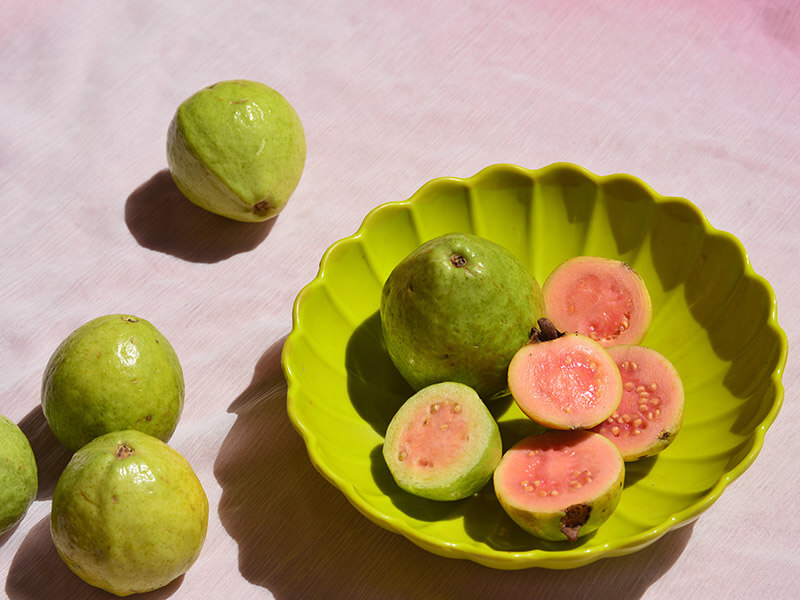
For this method, the process is a bit complicated with more steps. But once you get used to it, this option is a piece of cake and retains the guavas’ quality better.
Step 1: Peel and cut guava
After peeling guava skin off, cut it up however you like. To make it more convenient for future use, I’d recommend cutting it into slices or cubes. Slicing it into half will be just fine.
Place the sliced guava into a freezer-friendly container with enough room for the guava and some extra space at the top. This headspace helps speed up the freezing process, thus providing longer storage time.
Step 2: Make the coating syrup
Simple syrup plays a protecting role in keeping your guava from losing flavor or getting freezer burn. This kind of syrup takes no time to make: Boil up a mixture of water and sugar with a ratio of 1:1.
Pour the syrup over the guava. Be sure it completely coats the fruit before putting the guava into the freezer.
Since guava will get cooked if dipped in hot liquid, and its taste will no longer be as tasty, remember to let the syrup cool down before pouring it over the guava.
It’s called “simple syrup” since it is super simple to make!
Take Some Notes
Freezing techniques apply to ripe guava only. Freezing unripe one is not a good choice as its texture and taste will be completely the opposite of how you want it to be: When thawing frozen green guava, its flesh will collapse and become watery with a sour taste.
Whichever technique you choose, remember to place a date tag on the container/ plastic bag that contains frozen guava. Freezing helps preserve guava for 8-12 months, so it’s best to use them up before this time ends.
How To Defrost Guava
If you don’t have a compatible tray for defrosting, the simplest way to thaw your frozen guava is to transfer them from the freezer to the refrigerator. Once completely defrosted (usually takes 5-6 hours), guava is suitable for immediate use or can last in the fridge for a day.
To boost the defrosting process, you can put your sealed bag of frozen guava into a bowl of cold water. Change the water every 30 minutes to prevent bacteria growth. Doing this helps shorten the thawing time to 2 hours.
If you’re using frozen guava for some smoothie recipes, there’s no need to defrost. Just prepare a nice blender suitable for smoothies. Then, toss your frozen guava with some ice cubes straight into it!
How To Refreeze Guava
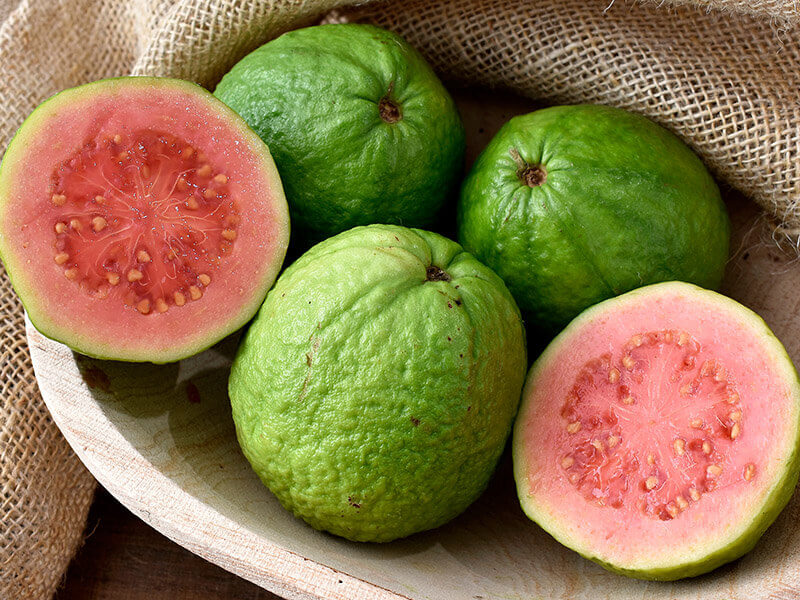
Can’t use up your thawed guava? Don’t worry because you can always refreeze it. You only need to put your left-over fruit back into the freezer.
However, you should be aware of guava’s decreased quality every time you refreeze it. Freezing guava multiple times may result in a less tasty flavor. To avoid refreezing guava, cut them into desired smaller portions before storing!
Bonus Guava’s Shelf Life Hacks
Raise your guava preservation game to the next level by mastering it from the very first steps: learn how to pick the perfect guava home!
Choose The Best Guava
Let’s start with picking out the best guava on the shelf. You should take the right ones home as guava can rot fast. Pay close attention to every sign showing guavas’ ripeness because looking at the appearance alone is not enough.
Skin Color And Surface
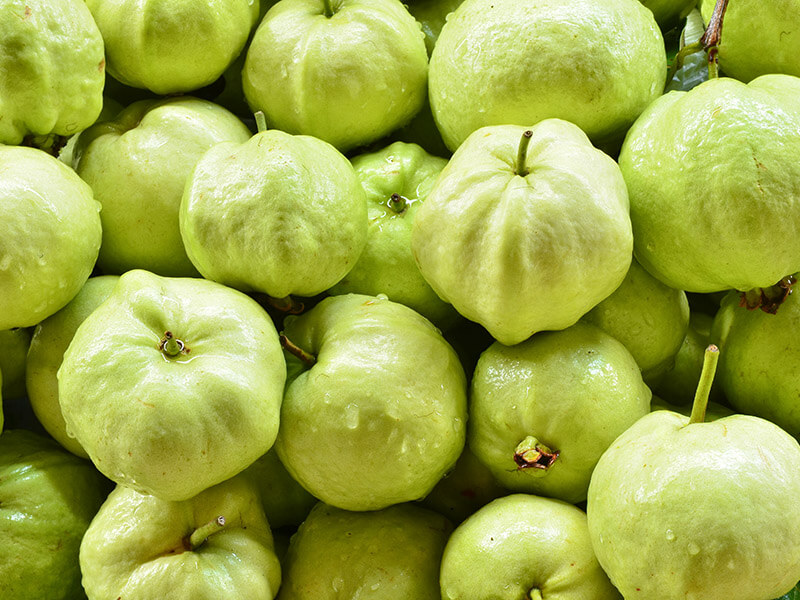
First, decide which one is ripe or unripe by looking at the fruit’s color. Normal unripe guava has green skin, while ripe guava is slightly more yellow. This can be quite tricky at first, but after a few tries, you will already be a pro!
Also, perfect guava should have even, smooth skin. Avoid ones with cuts or tears since they will make guava ripen faster when exposed to air.
Texture
After picking the perfect green yellow-ish ones, check on the ripeness again by using your finger. Like mango or avocado, the ripe one is slightly softer when slightly pressed.
If it’s rock hard, it is definitely unripe. Too short isn’t good, either. When you squeeze, if the skin bursts, this guava has already come near the expiration date.
Smell
It is also recommended that you give it a good sniff before purchasing because the smell is one important factor in deciding whether guava is good or bad. Ripe guava should have a strong fragrance that is sweet, fruity, and somewhat floral.
No worries if you bring the unripe guava home. Leave them on your kitchen counter for a few days, and they will be ready in two shakes! But remember that the heat from sunlight or electronic devices may rush the process.
A detailed explanation on choosing and cutting guavas to store them better.
Beware Of Spoiled Guava
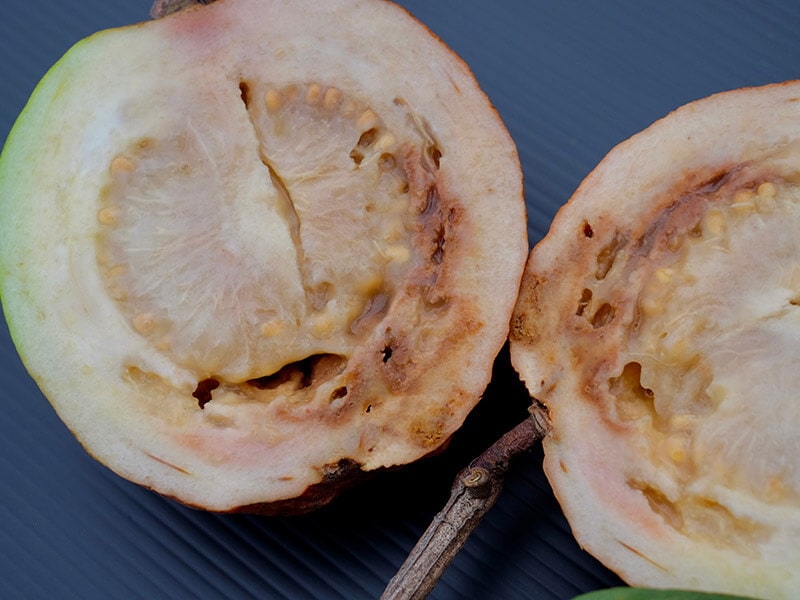
Don’t forget to look for those blemishes on the skin of guava. Brown dots and moldy spots can indicate that the fruit is overripe or rotten.
Giving your guava a finger test is also an easy way to identify that rotten one. If it tears apart or collapses when pressed, it’s more likely to have gone bad.
If it gives off a vinegary/ rotten scent, the high chances are that it is already spoiled and should be thrown away for good.
In case you already have it at home, another method to check for rotten guava is to cut it open. Unless you catch sight of worms or brown/ black flesh on the inside, it is still safe to eat (but do it quickly!).
FAQs
Some additional information is below in case you still have in mind some questions about guava and its shelf life.
Enjoy Your Guava In The Best Quality
As you already understand that guava takes a very short time to rot, save yourself a suitable preserving method. It’s totally up to you to pick a certain method, but keep in mind the amount of time you have before it is spoiled.
Unless you got your concerns all explained in this post, feel free to comment on your question(s) so that I can give you the answer. Don’t forget to share this article with your friends, so they know about guava’s shelf life and how to store it correctly. Many thanks!
References
- En.wikipedia.org. 2022. Guava – Wikipedia.
- Mahajan, B., Sharma, S. and Dhall, R., 2009. Optimization of storage temperature for maintaining quality of guava..
